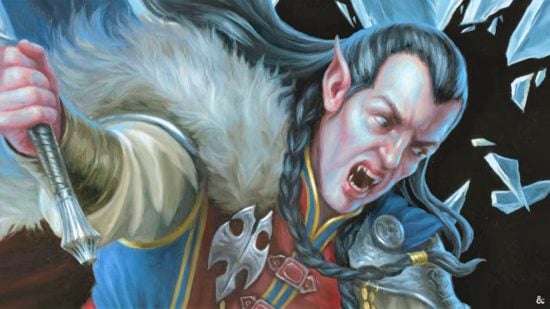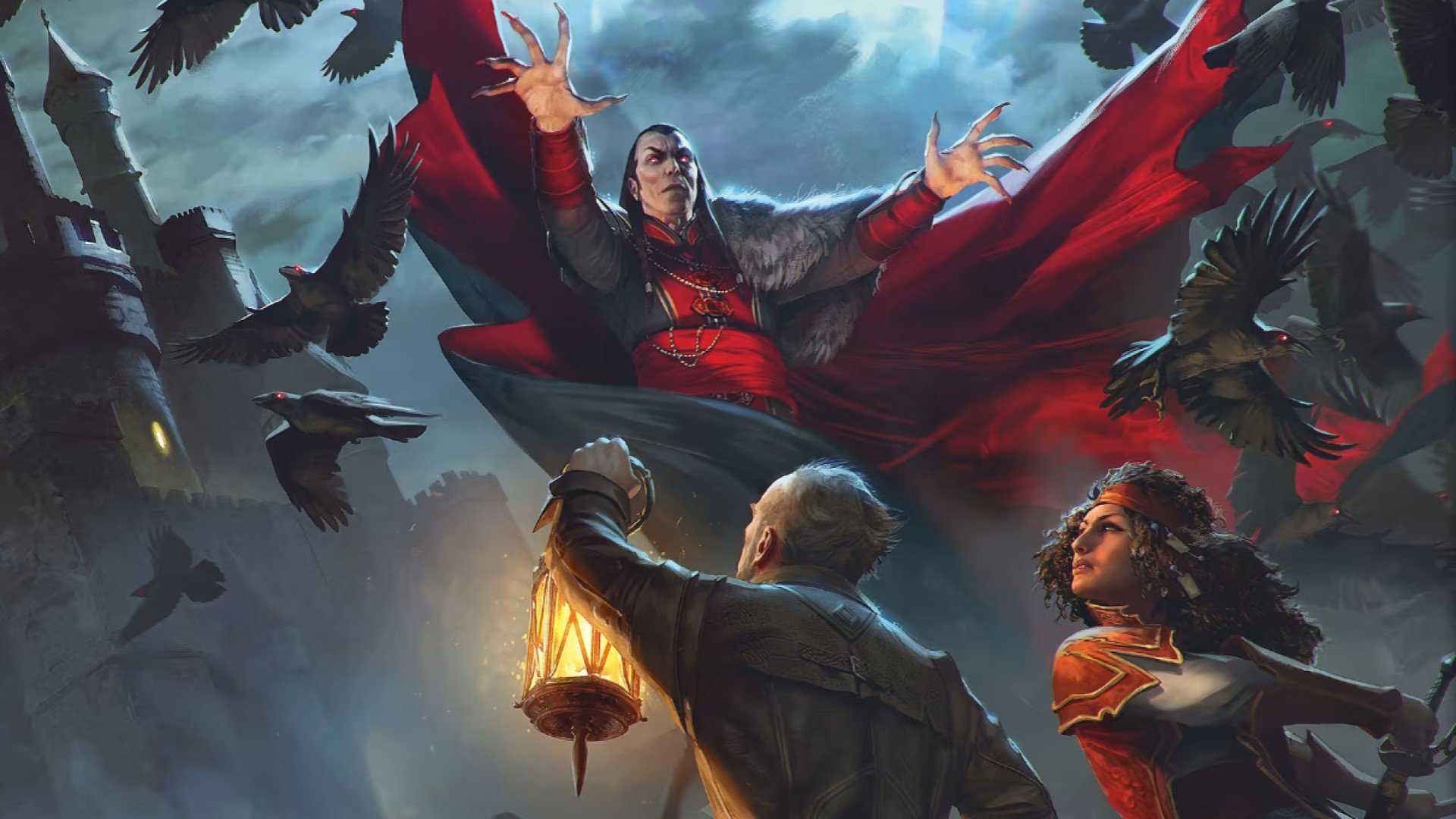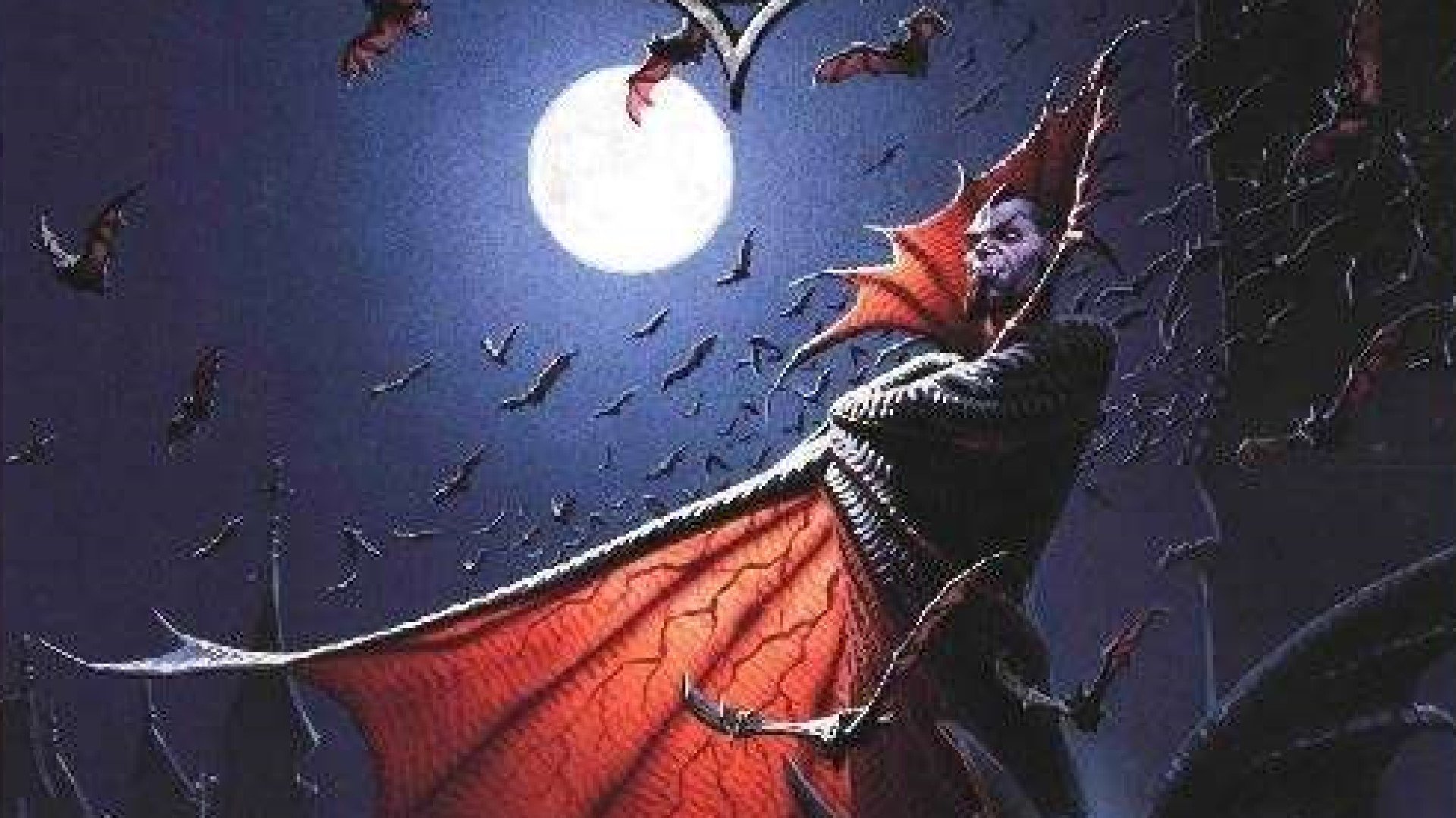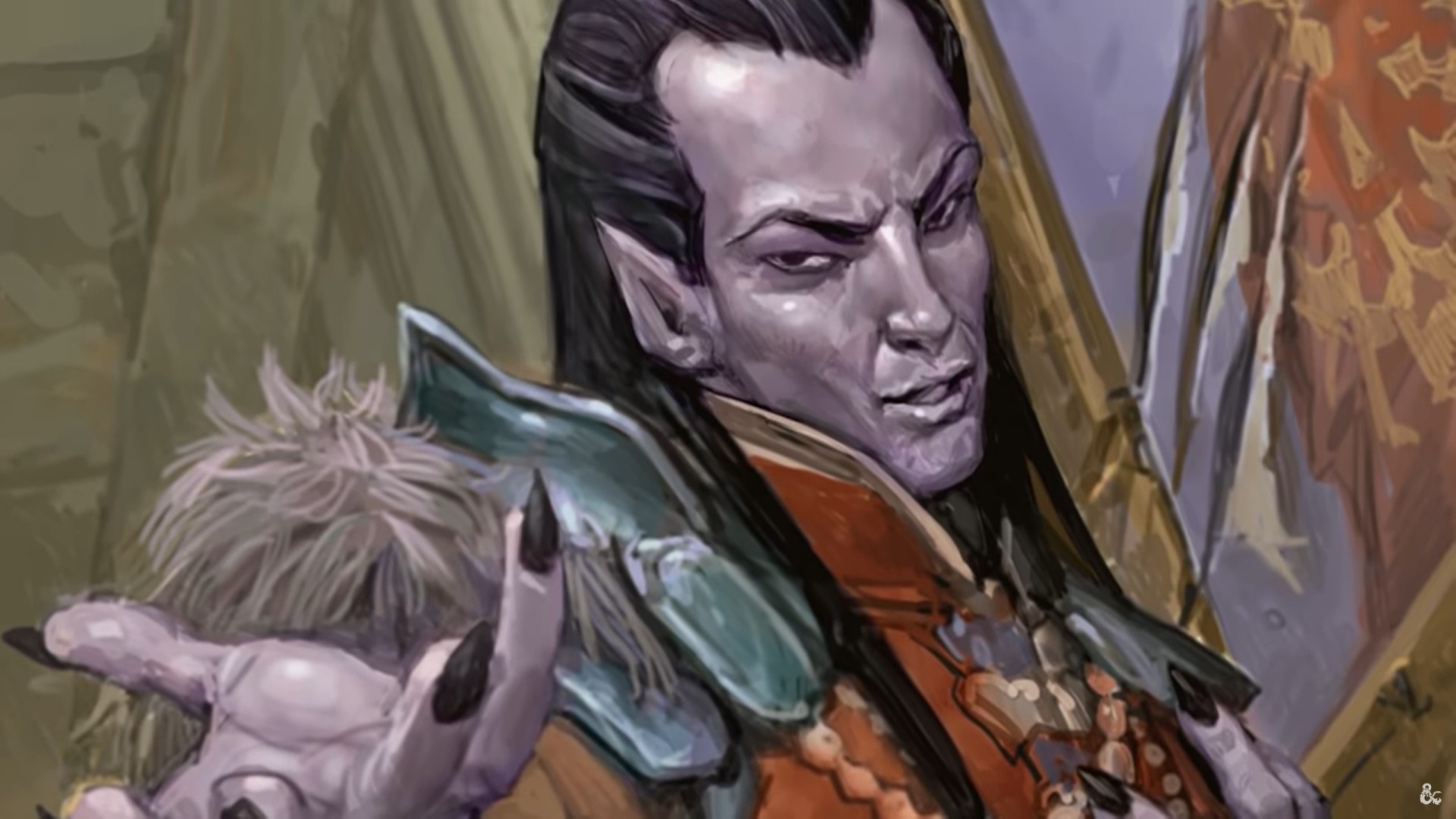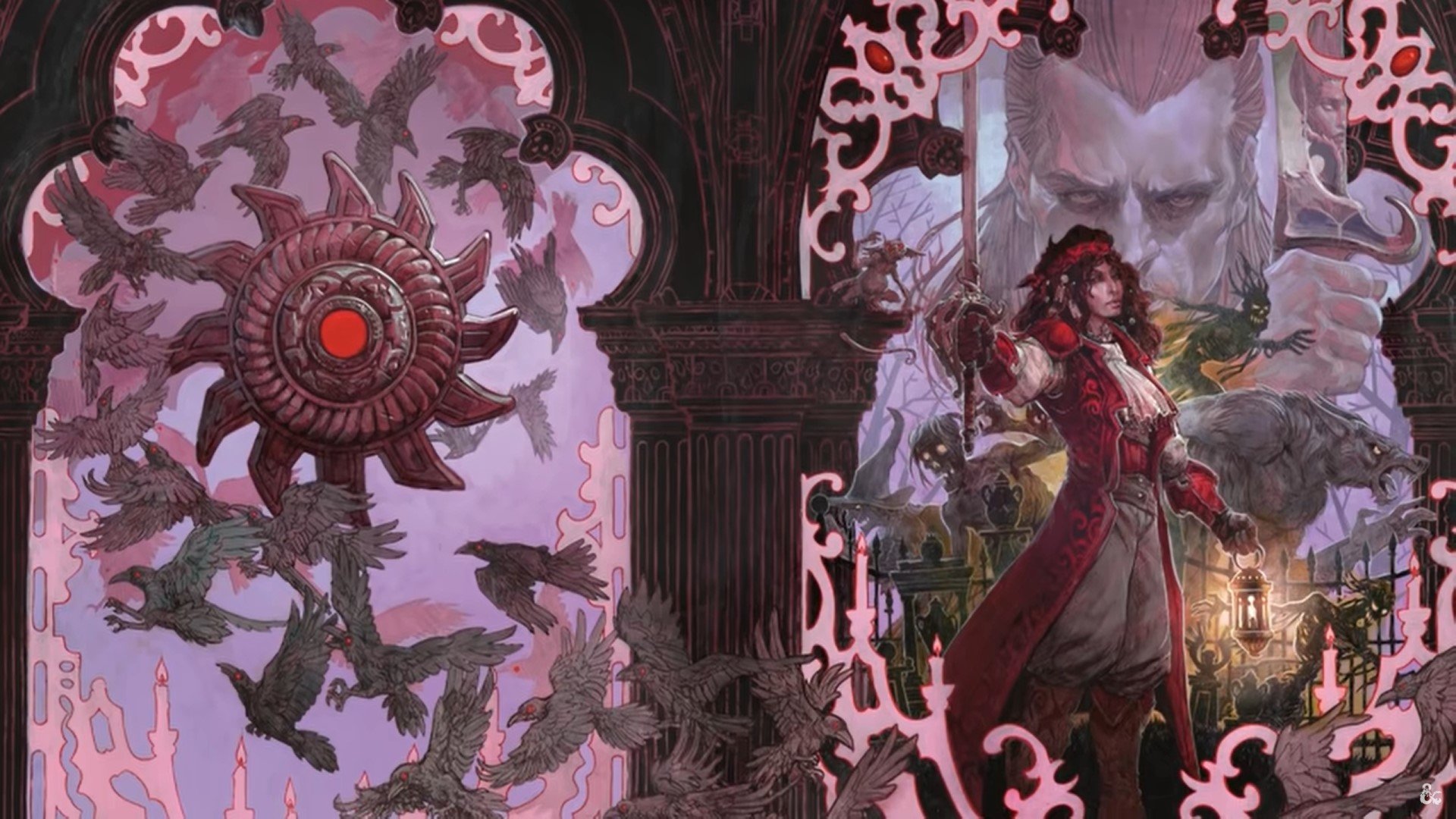They vant to drink you blood! Ah, Ah, Ah! But what else does the D&D Vampire 5e van- sorry, want? Powerful, intelligent, undead monsters, D&D vampires are creatures of obsession and need – their pure emotions twisted after death into something sinister and harmful. Part of Dungeons and Dragons since ye olden days, and featured in countless published campaigns, vampires are one of the more fleshed out monsters in DnD.
Always plotting something nefarious, and prone to hanging out in lairs with lots of lesser minions like DnD zombies that a low level group can cut their teeth on, the Vampire 5e makes for an excellent big bad that can taunt a DnD party throughout a campaign. And with the power to climb walls, become a bat, or dissolve into mist, vampires always have a quick escape up their sleeve, so are less prone to getting unceremoniously killed off in act one by an overzealous party.
It’s vital to know how the D&D vampire 5e works before you face one in battle, or use one in your DnD campaign. With their origins in ancient folklore, vampires are common monsters not just in Dungeons and Dragons, but across all monster media. But unlike werewolves, who always seem to have the same ‘silver bullet’ the rules for vampires are always different. Some can transform into bats; others can fly about in human form. Some are afraid of garlic; others dislike running water. Some aren’t keen on sunbathing; others say it brings out their ‘sparkle’. It’s all a bit confusing.
But don’t worry, we’re here to help. From stats to spawn, here’s what the D&D vampire is all about:
D&D Vampire 5e stats
| Challenge Rating | 13 (10,000 XP) |
| Proficiency Bonus | +5 |
| Armour Class | 16 (natural armour) |
| Hit Points | 144 (17d8 + 68) |
| Speed | 30 ft |
| Strength | 18 (+4) |
| Dexterity | 18 (+4) |
| Constitution | 18 (+4) |
| Intelligence | 17 (+3) |
| Wisdom | 15 (+2) |
| Charisma | 18 (+4) |
| Saving Throws | Dex +9, Wis +7, Cha +9 |
| Skills | Perception +7, Stealth +9 |
| Damage Resistances | Necrotic, and Bludgeoning, Piercing, and Slashing from non-magical attacks |
| Senses | Darkvision 120ft, Passive Perception 17 |
| Weaknesses | Forbiddance, Harmed by Running Water, Stake to the Heart, Sunlight Hypersensitivity |
| Languages | As in life |
| Abilities | Shapechanger, Legendary Resistance, Misty Escape, Regeneration, Spider Climb |
| Actions | Multiattack, Unarmed Strike, Bite, Charm, Children of the Night, Legendary Actions |
D&D Vampire 5e Weaknesses
Before we get to the many, many tools in a vampire 5e’s arsenal, let’s take a look at its quite considerable list of weaknesses. Always start with the good news, right? First up: running water and sunlight. If you can somehow schedule your vampire showdown for high noon, or set the battle in a river, you’ll have a major advantage – as a vampire 5e will take 20 damage if it ends its turn in moving water (acid damage) or sunlight (radiant damage).
D&D vampires clearly take cues from Dracula, as like that undead celebrity, they’re tied to their resting place and must snooze where they were buried during daytime. To keep mobile, vampires have to cart coffins or big mounds of dirt around, and if you can intercept this and catch a sleeping vampire, you’re in the money. If you stab a vampire in the heart with a wooden piercing weapon, while it’s incapacitated in its resting place, it’ll be paralysed unless you remove it.
The vampire 5e also can’t enter a residence unless invited, so if you’re able to escape from a fight that goes south, you should be safe while you lick your wounds. (Keep an eye out for anyone who seems too into the wound-licking though – could be a vampiric curse.)
D&D Vampire 5e Abilities
As we hinted earlier, the vampire 5e is a shapechanger, able to use its action to turn into a bat or a cloud of mist. A vampire’s clothes will change with it (otherwise that’d just lead to embarrassing situations) but it’ll have to drop whatever it’s carrying. As a bat, D&D vampires have the same stats, except they are now Tiny size and have a walk speed of 5ft (flying speed is the usual 30 though). As mist, vampires can squeeze through gaps and occupy the same space as players. They can’t be hurt by non-magical damage in this form (apart from the sun) and have advantage on Strength, Dexterity, and Constitution saves.
When a vampire 5e drops to 0 HP, it’ll also turn into mist instead of slumping down KO-d. If it can reach its resting place in the next two hours, it can reform and will regain 1 HP over the course of an hour. It’s paralysed until it does this however, so follow that mist! Or, we don’t know, fight the vampire in an airtight box or something.
While D&D vampires lose 20 HP a turn when in water or sunlight, when they’re not, they have regeneration and will regain 20 hit points every turn. This makes them a real pain to kill, but you can shut down this ability for a turn by damaging the vampire 5e with holy water or a source of radiant damage.
Finally, in D&D, vampires have spider climb, and can hang upside down on the ceiling all creepy-looking.
D&D Vampire 5e Attacks
The vampire 5e can use multiattack in its ‘human’ form, which means it can dish out one unarmed strike (+9 to hit, 1d8+4 bludgeoning damage) and one bite attack (+9 to hit, 1d6+4 piercing and 3d6 necrotic damage) every turn. Its unarmed attack can also be used to grapple instead of dealing damage.
In its bat form, the vampire 5e can only bite. However, this is by far the stronger of the two attacks. Not only does it deal more damage on average, it also reduces its targets max HP for the amount of necrotic damage dealt, until they take a long rest to recover. The vampire then gains health equal to the necrotic damage dealt – on top of its regeneration, this thing’s a healing nightmare. If you’re reduced to 0 HP by a vampire 5e bite attack you drop dead and rise the following day as a vampire spawn.
With their suave dress sense and excellent table manners, D&D vampires know how to lay on the charm. They can also use Charm on a target, who must then make a DC 17 Wisdom saving throw, or be unable to attack the vampire and view them as someone to be protected instead. You can retake the save each time the vampire or their pals hurt you, otherwise you’ll be under its sway for 24 hours.
Finally, once a day, with its Children of the Night ability, a vampire 5e can summon a swarm of beasties – 2d4 bat or rat swarms indoors, and 3d6 wolves outdoors. These won’t show up right away – you’ll have 1d4 turns before the hordes descend.
Because it’s a ‘boss’ monster, the vampire 5e can use three legendary actions between turns. It can use these to move, make an unarmed attack, or bite – though the latter burns through two actions.
